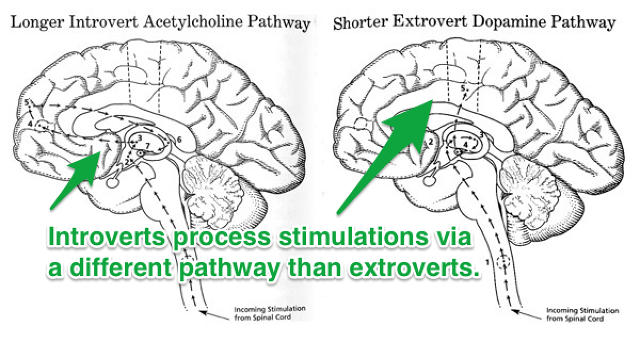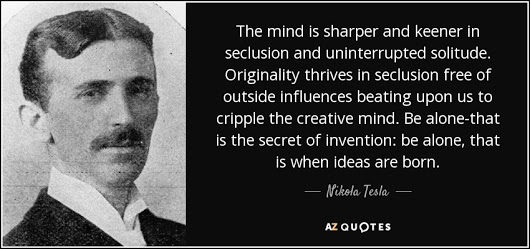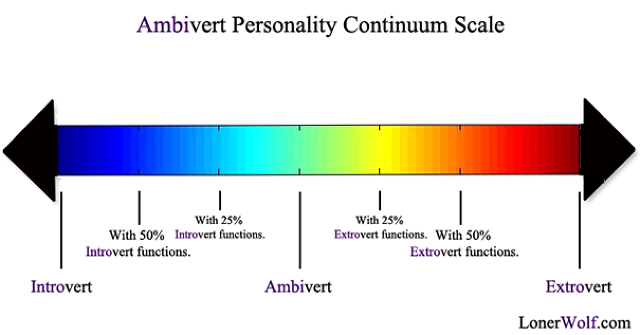Just about all entrepreneurs speak of creativity being a massive factor that contributes to their success.
In fact, Albert Einstein once said, “Imagination is more important than knowledge”.
Creativity is using your imagination to stimulate new ideas that no one has thought of before. This is ever so critical for entrepreneurs because they need to have original and different solutions that solve a person’s problem better than the competition.
In this article, we discuss how entrepreneurs use creativity, and discuss research so that you can build your own creative genius.
1. What Is Creativity?
Creativity is simply an idea that is new and different. It starts in our minds, whereby we can then act on this, and put into practice through our behaviours. For example, we know that musicians such as Mozart and Bach thought of the sounds in their mind. After peculating the idea, they then put this idea onto the instrument.
In the academic literature, they call this creative thinking. Moreover, this describes that we produce creativity in our imagination. Furthermore, there are also creative actions, which explain how we act. However, our creative action is only possible through our creative thinking and so this remains as the predominant terminology.
Most commonly, scholars describe creativity as the ability to connect existing ideas by which a new idea accrues. This is because highly creative people are able to find hidden patterns in things, and make connections between objects that do not seem to have a common relationship.
Nicola Tesla Quote On Creativity

Creativity always starts from your imagination. In fact, Nikola Tesla tells us that his inventions always started as an idea in his mind. Tesla famously tells us that he spent time alone to think alone, so he can tap into his imagination more effectively.
1.1 The Usefulness Of Creativity?
Scholars have two different stands on creativity. There are the early researchers that describe creativity as new ideas that are useful. However, studies that are more recent show this is not the case.
In fact, the most respected research on creativity (fourth grade slump) shows us that children of the age of five are the most creative individuals. Children would not necessary have the best outcome for solving problems; however, they would have the most imaginative.
2. Why Is Creativity Important For Entrepreneurs?
Creativity is the exercise people do use that has percolated the best inventions and innovations in the world.
2.1 Leads to Innovation
The great inventors of our time say that creative thinking is the source to their inventions and more so their genius.
Nicola Tesla, Albert Einstein, even Steve Jobs say that their innovations would have not been possible without first being able to think outside of the box.
Creative problem solving is without a doubt in high demand across all aspects of strategy and production. For example, employers are calling out for creative thinkers to solve their issues. As well as, in the entertainment industry such as song writing and film production all require this way of thinking.
2.2 Leads to Success
A 2010 IBM study shows us that creativity is the #No1 key attribute for success.
This is because there findings demonstrate that firms are suffering from increasingly complex problems and density of competition. As well as, the competition having greater competitive efficiency teams are required to lead with bold creativity.
By which employees are able to connect with customers in imaginative ways and optimise the business operations and productivity for a faster and low cost delivery.
2.3 Leads To A Better Economy
According to many scholars and theories, we are living in the age of creativity. In addition, Joseph Schumpeter outlines since the industrial revolution we have experienced waves of innovation.
In these waves of innovation, we have experienced better living standards and the capabilities of technology drastically increase.
Overall, the levels of poverty have significantly reduced since the industrial revolution and the standard of living has increase. As well as the advancements in medication has increased the life expectancy.
3. Is Creativity Learned?
Can we learn to be creative? In the scientific community, they call this a debate of nature or nurture.
People have this common question when they learn that creativity is a trait for success.
In 1968, physiologists George Land and Beth Jarman did a research paper, which we know as Fourth Grade Slump.
In this project, they gave 1,600 children a test to see how creative these individuals where. The physiologists did this study over lasted a 18 year period, whereby they gave children a creativity test at four separate intervals. The first test was when the children were just five years old. They then re-test these same children when they were of 10 years of age, and again when they were 15. Two years later, they tested 280,000 adults to see how highly they scored on the creative test.
3.1 First Grade Slump Creative Test Scores

As you can see from the above table, a person is at their most creative at the ages of 5 years old.
We conclude the research by observing that as we get older we are less creative.
Ken Robinson On Creativity

For example, the study reveals at ages of five, the creative range was at 98%. At ages 10, the creative range was a 30% and fell to a further 12% 5 years later. More shockingly people at the ages of 25+ scores 2% of the creative scale.
For these results Land actually wrote, “From this and similar research we can conclude that creativity is therefore not learned, but rather unlearned”
Furthermore, this study concludes that we can learn to be creative. This means if we grow out of creativity then these effects are not within our biology, so we can learn them again. Scholars strongly suggest the reason we get less creative from ages 5 to 25 is our life style and culture that plays a vital role.
Overall, if we can unlearn creativity then we can learn it again.
3.2 Why Children Are More Creative?
A child has to be more instinctively outgoing and friendlier than usual to make good first impressions, and overall friends.
Countless studies show behaviours of children and some of these behaviours include:
- Children are trying to discover them selves
- Trying to make their first friends
- Learning how the world works
- Discovering how to act in different environments and take part in learning at school and sports
- The child is playful, excited by things like colours and shapes which all kinds of emotions are brought to the surface.
As we get older, the rules of society and education teach us that there is only one way to govern an outcome. By abiding these rules, which is our legal requirement we are fixed to conform to the rules of society, therefore, the endearment of discovery is lost and creativity level has dropped or even lost.
4. How To Get Creative
Creativity is an asset that everyone is borne with and it is something everyone has, which is lost through the natural events of life. The brain in fact has a million, million brains cells that all integrate and so anyone who says they are not creative with a piece of equipment like that is obviously making a mistake.
We are able to learn to be creative, in fact to become more creative you just need pursue activities that involve using your right hemisphere more. As these activities help you tap into the right side of the brain.
4.1 The Activates of the Human Brain

This can include playing an instrument, being spontaneous or even building a business; this will naturally stimulate creativity. In fact, John Cleese discusses an interesting study, which explains that creative people involve themselves in activities that involve using the right hemisphere more.
For example, a writer will use their imagination (right hemisphere) to form the idea and then use words (the left hemisphere) to put the creative idea into reality.
To conclude this, of the age 13+ we are ingrain ourselves in more left hemisphere activities. Other research also shows that at the age of 9 we start to develop routines. Routines are a form a left side thinking.
4.2 Open & Closed Modes
In the below video, John Cleese discusses that people generally function in two modes – to achieve creativity.
Cleese describes these modes as the open mode and the closed mode.
The closed mode (left brain thinking) is focused, impatient with a little tension init. It is the mode which is most commonly found employees in the work place and under stressful situations – but not creative. It is found in a place of discomfort.
By contrast the open mode (right brain thinking) is a relaxed, expansive, less purposeful mode in which we’re probably more contemplative, more inclined to humour, which always accompanies a wider perspective and consequently more playful.
Curiosity for its own sake can operate because we are not under pressure to get a specific thing done quickly, we can play and that is what allows our natural creativity to surface in a mood. It is found in a place of comfort.
The common behaviours of children that result in creativity is:
- Playfulness
- Comfort
- Learning
- Inspiration
In the next sections, I will discuss these in more detail.
5. Comfort Zone & Creativity
In the above passage it explains how being creative is just a case of doing right-sided activities as this helps tap into the right side of the brain (thus, achieve open mode).
However, in order to be successful of tapping into our creative hemisphere we have to find a place of comfort.
What is more confusing both introverts and extroverts find comfort in different places. Moreover, they process experiences and relax in different ways. Which are essential factors for finding that place of comfort.
5.1 Introverts and Extrovert Comparison

Introverts find comfort different from extroverts to get themself into the more creative open mode.
5.2 Introverts
Introverts (or those of those with introverted tendencies) tend to recharge by spending time alone. They lose energy from being around people for long periods of time, particularly large crowds.
Introverts will lock themselves away, so that they are alone just to process new information in quite.
Tesla on Solitude

Nicola Tesla, Warren Buffet, Bill Gates, and Mark Zuckerberg are all introverts. Whereby, these people often speak about solitude as their way to be creative.
5.3 Extroverts
Extroverts find their comfort from being around other people. They recharge by being social. Exrovert buzzes from the people around them and they naturally connect, share laughter and get in that place of comfort through the enjoyment of being with other people.
They will find that their energy is sapped when they spend too much time alone. This is their way of “turning off” – finding their place to regenerate through participation. Eckert says that they are ‘always on’, and do not like solitude.
Ali Edwards says that, “My creative spirit is interested in documenting the wonderful everyday details of our lives. To really get to the heart of the matter I need to be fully participating in my life, in the interactions with my kids and husband and family and friends. If I am just going through the motions or wishing away the present moment for “the next thing” I am missing the blessing of right now. My creativity requires the habit of active participation and daily attention to detail.”
5.3 Participation and Solitude
Most of us will be one or the other, but writing with your right hand doesn’t render your left hand inert. Similarly, an extroverted person can still do things that aren’t typically associated with extroversion.
Meanwhile, introverts can learn to adapt to more extroverted scenarios, even if it might not come as naturally (COOPER, 2013).
Finding that place of comfort and creative habit on both sides of the coin (introvert/extrovert) is the balance between solitude and participation which will enhance the creativity.

The image represents the extreme measure of introvert and extrovert, being that everyone will land close to the middle.
The difference between introvert and extrovert ability to recharge could also be the explanation to why apple is so successful – A force of both introvert and extrovert. It would also suggest why Bill Gates is known to switch personalities. He is switching from participation and solitude. Although this doesn’t explain why introverts are generally more successful and have more creative ideas.
My personal analogy is that the role of discomfort plays just as an important role of comfort. My analogy is discomfort and comfort is a balance. A greater feeling of discomfort will later be balanced out by an even greater feeling of comfort. Thus, achieve greater Open Mode. By going out of their comfort zone they will be able to thrive or reenergize better once in their comfort zone again (Owens, 2015). It happens that introverts feel more discomfort, even anxiety when participating in life. This great discomfort is self-inflicted in order to proceed in life’s events. Extroverts feel discomfort less, as the scenarios of life’s events are more tailored to the extrovert.
7. Activities that make you more creative
7.1 Take Naps
It is scientifically proven if you sleep, when faced with a problem can enhance your creativity and find better solutions (Cantor, 2010). Google has sleeping booths inside the building.
7.2 Hand Writing
Hand writing by hand and reading handwriting stimulates more neurons in the brain opposed to reading text of the same style, like on computer for example (BOUNDS, 2010) It also improves IQ.
David Allen also says. “To write something down is the first way of making it tangible, manifest”. Bringing it into the physical world, and studies show people are more successful when they write ideas down. This Releases information clouding the brain when we don’t capture stuff and organize it. Giving a person mental space. Reading also improves concentration and reduces stress.
7.3 Go for Walks
Go for a walk and explore looking at things in a different perspective – Einstein: “I have a regular work schedule; I take time to go for long walks on the beach so that I can listen to what is going on inside my head. If my work isn’t going well, I lie down in the middle of a workday and gaze at the ceiling while I listen and visualize what goes on in my imagination.” creative output is increased 60% when walking (WONG, 2014). See new things and engage with new people. The most creative people have a wide variety or friends and lots of memories. Steve jobs were known for his walking meetings.
7.4 Find fun
Chase Jarvis: ‘Doing what you love inspires you to be more creative. Make time and space for having fun. All work and no play makes Jane a dull girl’.Listen, play music & play, Not only does music bring out different emotions in people, it will increase your creativity (ScienceFoundation, 2016) giving the ability to play (Cleese, 2015).
7.5 Exercise
Breaking the body and mind down so creativity rises to the surface, turning stress into creative fuel (FIELDS, 2012).
7.6 Find Comfort Outside Your Comfort Zone
To be more creative get outside your comfort zone. Do things you would never dream of doing, things that will scare you, and things you want to do but never have the motivation for. Get out and do it.
This can include things like performing a speech in front of a group of people (this could be your business idea, presenting your business to a pitching panel for a loan or contacting newspapers and radio).
When on a night out be more outgoing (talk to strangers, chat up a girl or boy, buy a random person a drink) this will help build on that personality that draws people in.
Get on a plane, new environment and make new contacts that will help your business. You will begin to notice yourself changing, as well as feeling like your living life you will start to realize your characteristics will change that of a creative person.
7.7 Learning & Mimicking
This is a good example of participation. When you learn something new you have more information to play with. For example, I have been playing guitar for little over 10 years now and I always find when I am writing new music that by learning a new chord or scale that it influences my creativity.
This is also the same mimicking other artists. I find if I try to mimic some else’s technique It will inspire new ideas.
Conclusion
Creativity happens from the right side of the brain but it needs the left side of the brain to process this information and make it useful. Children are more in tune with the Right side, but they don’t know to process this information and execute the idea like a less creative adult could.
Extroverts reveal their creativity in the surroundings of others (participate) and Introverts reveal their creativity in a quite space (solitude).
The introvert doesn’t like participation but still participate in life, whilst extroverts like to participate they don’t like solitude, and so they are not forced to be in solitude.
The irony is for maximum creativity both participation and solitude is needed.
Extroverts make faster decisions and will go with the first idea they come across Extroverts don’t like solitude so they stick with the first idea they usually land on (Cleese, 2015). Extroverts instantaneously come up with ideas of possible solutions to a problem. But don’t give the idea enough thought as to whether al the bugs have been thought of.
Steve Wozniak (introvert) and Steve Jobs (extrovert) both partners for apple but Wozniak focused primarily on product development, which the innovation was most significant (ECKERT, 2016) part of apple in terms of the innovation and creativity.
The introvert will cower into a closed mode when working in a similar environment. On the other side of the same coin – Introverts usually find a quiet place, and they play with an idea until it becomes a master piece. This person will think and imagine ideas over again until they have the confidence to share the perfect solution (BABAUTA, 2010).
Participation subconsciously gathers the resources whilst solitude writes the novel.





